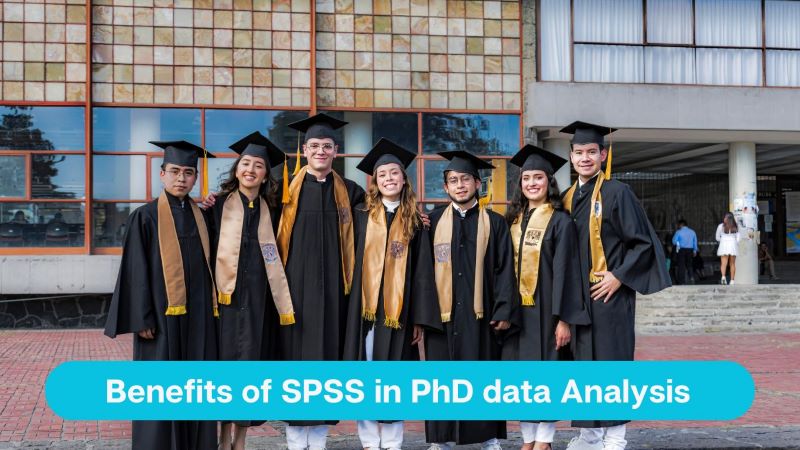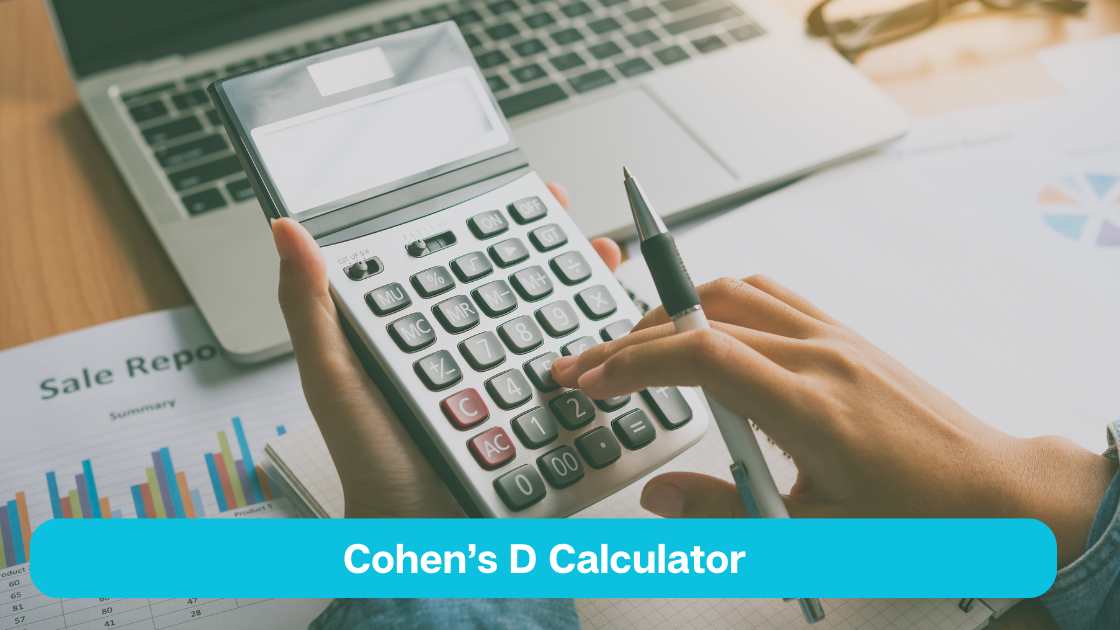Data analysis is a cornerstone of academic research, shaping the credibility of dissertations, theses, and research papers. It helps researchers transform raw data into meaningful insights and draw valid conclusions. Without the right tools, managing and analyzing dissertation data can become overwhelming. This is even more challenging, especially when dealing with large datasets or complex research methodologies.
Selecting the right statistical software is often challenging. Each tool has unique features tailored to different research needs, skill levels, and budgets. Some are easy to learn, while others require technical expertise. This guide simplifies the decision-making process by highlighting the top 10 statistical software for dissertation data analysis. Whether you’re just starting or need advanced features, this list will help you find a tool that fits your research objectives.
Key Considerations When Choosing Statistical Software
Choosing the right statistical software is like selecting the perfect tool for a job—it can make or break your project. With so many options available, each offering unique features, it’s easy to feel overwhelmed. The key is to understand your specific research needs and how they align with the capabilities of the software. By considering a few critical factors, you can find the ideal tool to make your data analysis smooth and effective.
1. Type of Research
Statistical software varies significantly in its capabilities for handling different types of research. Quantitative research often requires tools like SPSS or R, which excel in numerical data analysis. Qualitative studies, on the other hand, benefit from software like NVivo, which specializes in text analysis. If your research involves both numerical and textual data, mixed-methods tools like MAXQDA or QDA Miner are worth considering.
2. Complexity of Analysis
The complexity of your analysis should guide your choice of software. Basic descriptive statistics can be handled by tools like Excel or Minitab. However, advanced techniques like regression modeling, structural equation modeling, or machine learning may require software like SAS, Stata, or Python. Understanding the demands of your analysis ensures you select a tool capable of delivering accurate results.
3. Ease of Use
Ease of use is essential, especially for students or researchers new to statistical analysis. Tools like SPSS and Minitab are designed with intuitive interfaces and built-in tutorials, making them beginner-friendly. Advanced tools like R and Python offer greater flexibility but come with a steeper learning curve, making them better suited for those with technical expertise.
4. Budget and Licensing Costs
Cost is a significant factor for many researchers. Free, open-source options like R and Python are excellent for those on a tight budget. Premium software like SAS or Stata often comes with high licensing fees but offers advanced features and support. Universities often provide free access to these tools, so it’s worth exploring institutional resources.
5. Compatibility and Integration
Ensure the software is compatible with your datasets and integrates with other tools. For large datasets, choose software known for efficient data handling. Integration with platforms like Excel, Tableau, or Power BI can streamline workflows and enhance data visualization.
10 Common Statistical Tools When Analyzing Research Data [Dissertation, Thesis, & Publication Papers]

Choosing the right statistical software can be a daunting task for students and researchers working on their dissertations, theses, or research papers. The software you choose will play a crucial role in the quality of your analysis, its complexity, and the ease with which you can handle and interpret your data. Below, we dive deeper into the top 10 statistical software tools widely used for dissertation data analysis. This provides detailed information to help you make the best choice for your research needs.
1. SPSS (IBM SPSS Statistics)
IBM SPSS Statistics is one of the most popular software packages used in academic research. It is known for its user-friendly interface that allows researchers, even those without extensive statistical knowledge, to perform complex data analysis. SPSS offers a wide range of features, including support for descriptive statistics, t-tests, ANOVA, regression analysis, and more. The software also provides powerful data management tools and allows for easy data entry and cleaning.
Strengths and Limitations:
- Strengths: SPSS’s most significant advantage is its ease of use. With a simple point-and-click interface, even novice researchers can navigate through the software without much difficulty. Additionally, SPSS offers a variety of data visualization tools, which makes interpreting results easier.
- Limitations: While SPSS is user-friendly, it is not as customizable or flexible as open-source software like R. SPSS can also be costly, and its advanced capabilities are more limited compared to other tools like Python or R.
Common Use Cases:
SPSS is widely used in social sciences, psychology, education, healthcare, and market research. It is ideal for researchers analyzing survey data, experimental studies, or any project that requires standard statistical tests and reporting.
Examples of Analyses:
- Descriptive statistics
- Regression analysis
- Factor analysis
- ANOVA and MANOVA
- Correlation tests
Pricing/Licensing:
SPSS requires a paid license, with various pricing plans based on the number of users. Student versions are available at a reduced rate, typically starting from $99 per year.
Best Suited For:
SPSS is best suited for beginners and intermediate researchers in social sciences and healthcare who need a user-friendly interface to conduct standard statistical analyses.
2. R/ R Studio
R is a free, open-source software environment for statistical computing and graphics. It is highly customizable, and its flexibility allows researchers to perform a wide range of statistical analyses and create sophisticated visualizations. With an extensive library of packages, R is capable of handling complex statistical methods, including machine learning, Bayesian analysis, time-series forecasting, and more.
Strengths and Limitations:
- Strengths: R is known for its power and flexibility. Its open-source nature allows users to extend its functionality with thousands of available packages. The language also supports reproducible research, making it a favorite among academic researchers.
- Limitations: The learning curve for R can be steep, especially for beginners. Researchers must have a solid understanding of programming to utilize its full capabilities effectively.
Common Use Cases:
R is particularly useful in fields like bioinformatics, finance, and statistics. It is ideal for researchers working with large datasets, performing advanced statistical models, or engaging in data mining or machine learning.
Examples of Analyses:
- Regression analysis (linear, logistic, etc.)
- Time-series analysis
- Clustering and classification
- Machine learning (e.g., decision trees, random forests)
- Survival analysis
Pricing/Licensing:
R is entirely free and open-source, making it an excellent choice for budget-conscious researchers.
Best Suited For:
R is best suited for advanced users or researchers who require custom analyses and are comfortable with programming. It’s perfect for statisticians, data scientists, and anyone working in computational-heavy fields.
3. Python (with Libraries like Pandas, NumPy, and SciPy)
Python is an open-source, general-purpose programming language that has become incredibly popular for data analysis and statistical modeling. With libraries like Pandas (for data manipulation), NumPy (for numerical computing), and SciPy (for advanced mathematics), Python provides a robust toolkit for statistical analysis. Python is highly versatile, allowing researchers to conduct everything from basic descriptive statistics to more advanced machine-learning tasks.
Strengths and Limitations:
- Strengths: Python’s flexibility is one of its strongest points. It can handle a variety of tasks beyond statistics, including web development, automation, and more. Python’s integration with other tools like Excel, SQL databases, and visualization libraries (e.g., Matplotlib, Seaborn) makes it a powerful option for comprehensive data analysis.
- Limitations: While Python offers flexibility, it also requires programming skills. The syntax may be challenging for beginners, and setting up the environment to work efficiently can be time-consuming.
Common Use Cases:
Python is used across various domains, including economics, finance, machine learning, and bioinformatics. It’s ideal for projects that require advanced computational methods or when integrating with other data systems.
Examples of Analyses:
- Predictive modeling and machine learning
- Regression analysis (linear, logistic)
- Time-series analysis
- Data cleaning and manipulation
- Neural networks and deep learning
Pricing/Licensing:
Python is completely free and open-source.
Best Suited For:
Python is best suited for advanced users, data scientists, and researchers in fields such as computer science, engineering, and economics who require a versatile tool capable of handling large datasets and complex analyses.
4. Stata
Stata is a powerful statistical software package commonly used in economics, social sciences, and political science research. Known for its user-friendly interface and robust set of statistical tools, Stata can handle a wide variety of data analysis tasks, including econometrics, longitudinal data analysis, and complex survey data management. Stata’s ability to manage and analyze large datasets makes it an attractive choice for researchers working with real-world data.
Strengths and Limitations:
- Strengths: Stata is intuitive, and its command syntax is straightforward, making it accessible for users at all skill levels. The software excels at handling panel data and time-series data, and it has robust capabilities for statistical modeling and hypothesis testing.
- Limitations: Stata can be expensive, particularly for individuals or students without access to institutional licenses. It also offers fewer customization options compared to open-source alternatives like R or Python.
Common Use Cases:
Stata is frequently used in social science research, economics, public policy, and health economics. It is particularly useful in handling large datasets, such as census data, longitudinal studies, and survey data.
Examples of Analyses:
- Econometric modeling (e.g., instrumental variables, fixed-effects regression)
- Time-series analysis
- Survival analysis
- Survey data analysis
Pricing/Licensing:
Stata offers several pricing options, with annual student licenses starting at around $48 per year.
Best Suited For:
Stata is ideal for intermediate to advanced users in the social sciences, economics, and public policy who require a powerful yet user-friendly software for statistical analysis.
5. SAS (Statistical Analysis System)
SAS is a comprehensive software suite that provides a wide array of advanced analytics, business intelligence, and data management capabilities. It is especially popular in clinical research, healthcare, and enterprise-level data analysis. SAS offers powerful statistical procedures and models, along with excellent data management tools for cleaning, transforming, and analyzing large datasets.
Strengths and Limitations:
- Strengths: SAS excels in handling large datasets and offers robust support for advanced analytics, including predictive modeling and machine learning. It also has excellent customer support and is widely trusted in industries like healthcare and finance.
- Limitations: SAS can be expensive, and its proprietary nature means it offers less flexibility compared to open-source software. The learning curve is steep for beginners, and the software requires significant computational resources.
Common Use Cases:
SAS is used in clinical trials, business analytics, and financial analysis. It’s also widely used in large corporations for risk management, marketing analysis, and customer insights.
Examples of Analyses:
- Predictive analytics
- Clinical trial data analysis
- Linear and non-linear regression
- Time-series forecasting
Pricing/Licensing:
SAS offers several licensing options, starting at $9,000 annually for enterprise-level use.
Best Suited For:
SAS is best suited for advanced users, especially in the healthcare, finance, and enterprise sectors, where large-scale data analysis and reporting are essential.
6. MATLAB
MATLAB is a high-performance language for technical computing, widely used in engineering, mathematics, and scientific research. Known for its numerical computing and visualization capabilities, MATLAB is ideal for tasks involving simulations, signal processing, and algorithm development. It provides powerful tools for matrix operations, data analysis, and mathematical modeling.
Strengths and Limitations:
- Strengths: MATLAB is excellent for technical computing and simulations, making it a top choice for researchers in engineering and applied sciences. It has extensive built-in functions for mathematical modeling, data analysis, and visualization.
- Limitations: MATLAB is expensive, and its interface is less intuitive for those outside of technical fields. It also requires a solid understanding of mathematics and algorithms to use effectively.
Common Use Cases:
MATLAB is commonly used in fields like engineering, physics, and applied mathematics for numerical analysis, simulations, and technical computing.
Examples of Analyses:
- Control systems
- Signal processing
- Algorithm development
- Simulation and modeling
Pricing/Licensing:
MATLAB is licensed on a subscription basis, starting at $99 for students.
Best Suited For:
MATLAB is ideal for researchers and engineers working in technical and applied sciences, who need a powerful platform for numerical analysis and simulation.
7. Minitab
Minitab is a powerful and user-friendly statistical software widely used in quality improvement and process management. Its intuitive interface makes it easy to perform a variety of statistical analyses with minimal effort. Minitab supports a wide range of statistical methods, including regression analysis, ANOVA, hypothesis testing, and control charts. It is especially popular among professionals in manufacturing, healthcare, and education who need reliable statistical tools to ensure the quality of their work.
Strengths and Limitations:
- Strengths: Minitab’s simplicity and ease of use are its most significant advantages. It is designed to allow even beginners to quickly perform complex statistical analyses with minimal training. Minitab also offers excellent visualizations and graphical representations of data, making it easy to communicate findings.
- Limitations: While Minitab excels at basic and intermediate statistics, it is not as powerful or flexible as other software like R or Python for more advanced statistical techniques. Additionally, its licensing costs can be high, especially for organizations that require multiple licenses.
Common Use Cases:
Minitab is ideal for quality control, industrial research, and basic statistical analysis in business and healthcare. It is especially valuable for researchers and professionals in manufacturing, where process optimization and quality assurance are critical.
Examples of Analyses:
- Descriptive statistics
- Process control charts
- Regression analysis
- ANOVA
- Hypothesis testing
Pricing/Licensing:
Minitab offers various pricing options, with individual licenses typically starting around $1,200 per year, with discounts available for academic institutions.
Best Suited For:
Minitab is best suited for beginners and intermediate users who need a simple and reliable tool for quality control and process improvement analyses. It is ideal for industries like manufacturing, healthcare, and education that require straightforward statistical analysis.
8. NVivo
NVivo is a qualitative data analysis (QDA) software used primarily for analyzing text, audio, video, and other non-numerical data. Researchers use NVivo to analyze large amounts of qualitative data, identifying themes, patterns, and insights. NVivo supports coding and categorizing data, as well as visualizing results through various charts and models. It is commonly used in social sciences, humanities, and education for analyzing interviews, focus groups, and open-ended survey responses.
Strengths and Limitations:
- Strengths: NVivo’s ability to handle and analyze unstructured data makes it a standout choice for qualitative research. The software supports a variety of data formats, including text, audio, and video, and offers robust tools for coding and querying qualitative data.
- Limitations: While NVivo excels at qualitative analysis, it is not designed for quantitative statistical analysis, limiting its use in research that requires advanced statistical techniques. NVivo can also be expensive, and its learning curve may be steep for those new to qualitative research methods.
Common Use Cases:
NVivo is particularly useful in fields like sociology, anthropology, and psychology, where qualitative data is abundant. It is commonly used for research involving interviews, focus groups, case studies, and ethnographies.
Examples of Analyses:
- Thematic coding
- Content analysis
- Narrative analysis
- Sentiment analysis
- Visual data analysis
Pricing/Licensing:
NVivo offers several licensing options, with prices starting at around $900 per year for a single user. Academic discounts are available.
Best Suited For:
NVivo is best suited for qualitative researchers in social sciences, education, and humanities who need an advanced tool for analyzing qualitative data such as interviews, focus groups, and textual data.
9. Excel (with Analysis ToolPak)
Microsoft Excel, combined with the Analysis ToolPak add-in, offers a simple yet powerful solution for basic statistical analyses. Excel is one of the most widely used software tools across various disciplines and is familiar to most students and researchers. With the Analysis ToolPak, users can perform statistical tests such as t-tests, ANOVA, correlation analysis, and regression. Excel also offers data visualization options like charts and graphs to present findings.
Strengths and Limitations:
- Strengths: Excel is user-friendly and easily accessible. Most researchers already have access to it, and many are familiar with its interface, making it a quick and easy tool for basic data analysis. The Analysis ToolPak enhances Excel’s statistical capabilities without requiring specialized software.
- Limitations: Excel is not suited for complex statistical analysis or handling large datasets. It lacks the advanced capabilities of more specialized software like R, SPSS, or SAS. Additionally, its statistical functions are limited compared to other tools.
Common Use Cases:
Excel is widely used in business, education, and social sciences for basic data analysis. It is ideal for students and researchers working with small datasets or performing introductory statistical analyses.
Examples of Analyses:
- Descriptive statistics
- Regression analysis
- t-tests and ANOVA
- Correlation analysis
- Data visualization
Pricing/Licensing:
Excel is part of the Microsoft Office suite, which requires a subscription or one-time purchase. The subscription starts at $69.99 per year for the personal version, while institutional pricing varies.
Best Suited For:
Excel is best suited for beginners and intermediate users who need an accessible tool for basic statistical analyses. It is ideal for students or those working with small datasets who do not require advanced statistical techniques.
10. JMP
JMP is a statistical software package developed by SAS that focuses on interactive and visual data analysis. It is well-suited for applied research in a variety of fields, including healthcare, engineering, and business. JMP provides an intuitive interface that allows users to explore and visualize their data through dynamic charts, graphs, and interactive models. Its advanced analytics capabilities include regression, ANOVA, time-series analysis, and multivariate analysis.
Strengths and Limitations:
- Strengths: JMP’s interactive interface makes it easier to visualize and understand data patterns. It is especially powerful for exploratory data analysis and visualization, which makes it ideal for researchers who need to present their findings in a visually compelling way.
- Limitations: While JMP is excellent for visual and exploratory analysis, it is less suited for complex modeling and programming. Its capabilities are more limited compared to more specialized software like SAS or R. Additionally, it can be expensive.
Common Use Cases:
JMP is used across a variety of industries, including healthcare, engineering, and manufacturing. It is particularly popular for quality control, process improvement, and exploratory data analysis.
Examples of Analyses:
- Regression analysis
- ANOVA
- Time-series analysis
- Principal component analysis
- Quality control analysis
Pricing/Licensing:
JMP offers various pricing options, with a single-user license starting at around $1,200 per year. Academic discounts are available.
Best Suited For:
JMP is best suited for applied researchers, especially in business, engineering, and healthcare, who need a tool for interactive and visual data analysis.
Comparison Table of Statistical Tools
| Software | Key Features | Ideal User Type | Pricing | Use Case Suitability |
| SPSS | User-friendly interface, wide range of statistical tests, good for social sciences. | Beginners, Social Sciences Researchers | Starting at $99/month for individual licenses | Social science, psychology, education, healthcare research. |
| R | Open-source, highly customizable, extensive library of statistical packages. | Advanced users, Data Scientists | Free | Complex statistical modeling, data analysis, academic research. |
| Python | Open-source, flexible, supports numerous libraries (Pandas, NumPy, SciPy). | Tech-savvy users, Data Scientists | Free | Complex modeling, machine learning, data analysis. |
| Stata | Advanced statistical tools, handles large datasets, econometrics focused. | Economists, Social Science Researchers | Starting at $48/month for student licenses | Econometrics, social sciences, survey data analysis. |
| SAS | Advanced analytics, machine learning, high-performance computing. | Enterprise-level, Clinical Researchers | Contact for pricing, generally high-cost | Clinical trials, business analytics, big data analysis. |
| MATLAB | Excellent for technical computing, numerical analysis, and simulations. | Engineers, Researchers in STEM fields | Starting at $95/month for students | Engineering, numerical analysis, simulations, control systems. |
| Minitab | Easy-to-use, excellent for quality control, process management. | Beginners, Quality Analysts | Starting at $1,200/year | Quality control, process improvement, business analysis. |
| NVivo | Focuses on qualitative data analysis (text, audio, video). | Qualitative Researchers | Starting at $900/year for individual licenses | Qualitative and mixed-methods research, social sciences. |
| Excel (Analysis ToolPak) | Basic statistical tools, commonly used for data manipulation and visualization. | Beginners, Students | Part of Microsoft Office subscription ($69.99/year for personal) | Basic statistics, small datasets, academic research. |
| JMP | Interactive data visualization, powerful for exploratory data analysis. | Applied researchers, Business Analysts | Starting at $1,200/year | Applied research, exploratory analysis, business analytics. |
Key Take Aways
- The top 10 statistical software for dissertation data analysis include SPSS, R, Python, Stata, SAS, MATLAB, Minitab, NVivo, Excel, and JMP. These tools offer a range of features suited for different research needs, from basic statistics to advanced modeling.
- You should choose a statistical software based on your research type (quantitative, qualitative) and the complexity of your analysis.
- Select a tool that matches your level of expertise—whether you’re a beginner or an advanced user.
- Ensure the software works well with your dataset size and integrates smoothly with other tools you might use.
- Take advantage of free trials or tutorials to test the software’s features and ensure it fits your needs before committing.
Need Help with Dissertation Data Analysis?
If you’re feeling overwhelmed by the statistical analysis for your dissertation, thesis, or research paper, we’re here to help! Whether you’re using SPSS, R, Python, or any other statistical software, our expert team can guide you through the process. Reach out to us today for professional assistance with your data analysis needs and ensure your research gets the attention it deserves.







